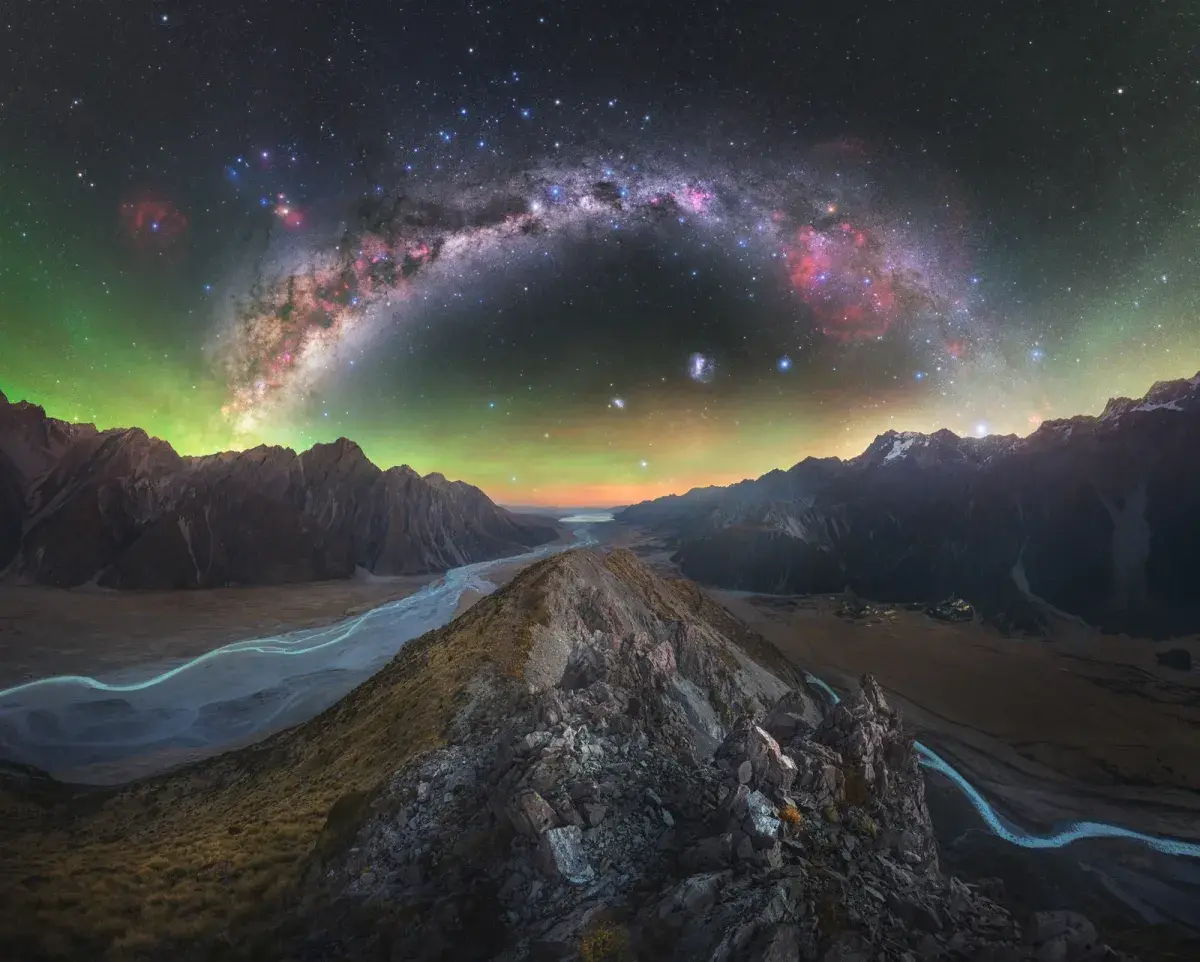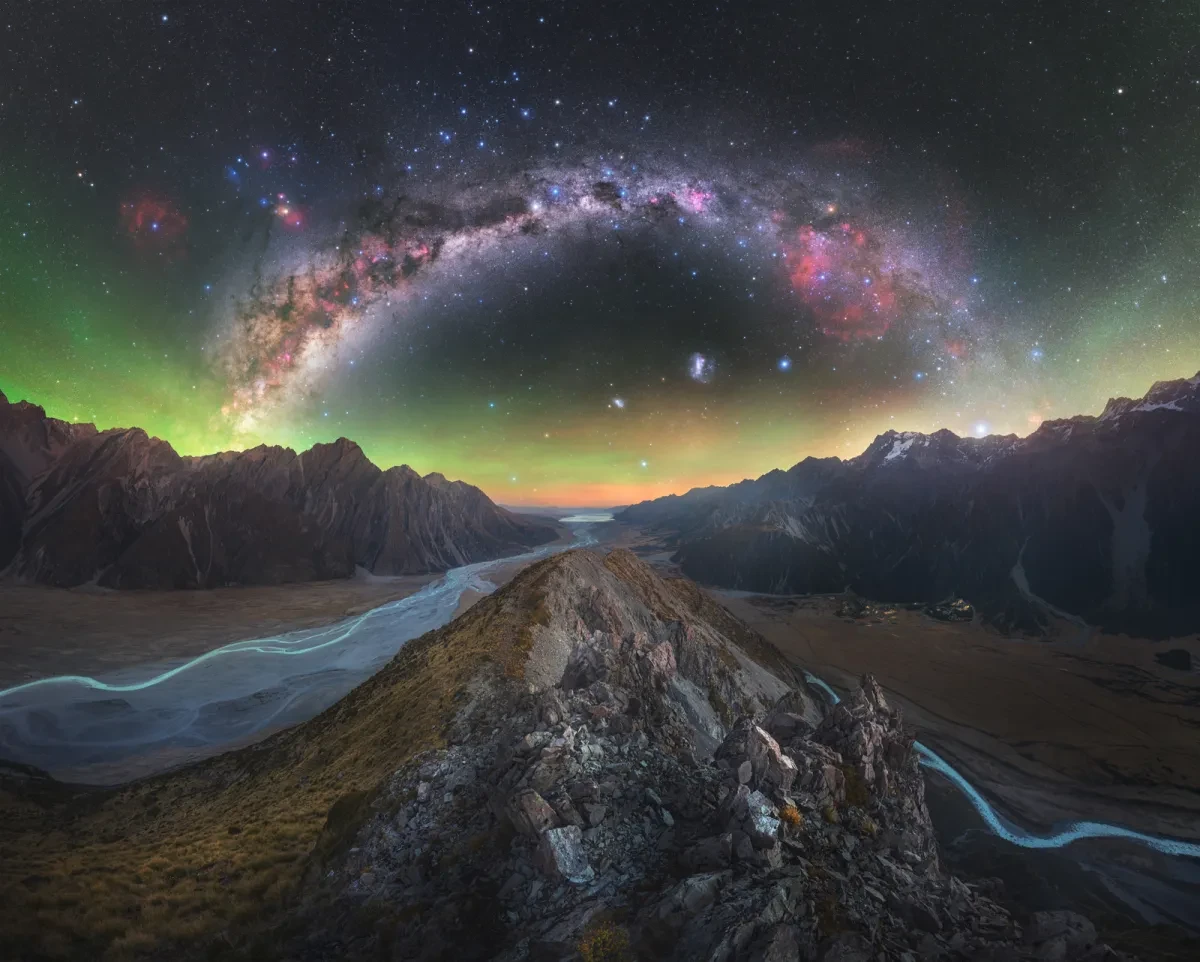If you need a blast of beauty (and who doesn't?) I highly recommend browsing the new Astronomy Photographer of the Year winners. They're spectacular -- and neither of these shots even made it to #1.
https://www.rmg.co.uk/whats-on/astronomy-photographer-year/galleries/overall-winners-2025 #space #science #nature #art #photography

"This is one of my biggest astrophotography accomplishments to date, and the largest panorama I have ever captured, with the full resolution image containing over a billion pixels from 62 images stitched together. I had envisioned this composition for a long time, capturing the twin glacial rivers with the Milky Way core off to the left of the image, as well as the famous Southern Cross and other pointers high in the centre sky."
!["During a routine time-lapse observation of the solar chromosphere [the thin, reddish layer of the Sun’s atmosphere above the visible surface], I captured a serendipitous moment when an aircraft crossed the field of view. Preserving this transient frame, I employed multiple blending modes to enhance the details of the solar background. Beyond stacking individual video frames, I processed the sequence, undertook colour inversion and synthesised 100 images through combined mean and minimum blending. This dual approach effectively accentuated both bright plages [active regions in the chromosphere] and dark laments through enhanced contrast.
"The composite image reveals the evolution of the Sun’s dynamic surface across a two-hour observational period, while the aircraft’s two-second transit remains frozen in time. This layered imaging rearranges time, blending celestial bodies and human technology in one photo."](https://files.mastodon.social/media_attachments/files/115/300/247/696/177/883/original/5e8200ff7583b911.webp)
"During a routine time-lapse observation of the solar chromosphere [the thin, reddish layer of the Sun’s atmosphere above the visible surface], I captured a serendipitous moment when an aircraft crossed the field of view. Preserving this transient frame, I employed multiple blending modes to enhance the details of the solar background. Beyond stacking individual video frames, I processed the sequence, undertook colour inversion and synthesised 100 images through combined mean and minimum blending. This dual approach effectively accentuated both bright plages [active regions in the chromosphere] and dark laments through enhanced contrast.
"The composite image reveals the evolution of the Sun’s dynamic surface across a two-hour observational period, while the aircraft’s two-second transit remains frozen in time. This layered imaging rearranges time, blending celestial bodies and human technology in one photo."
